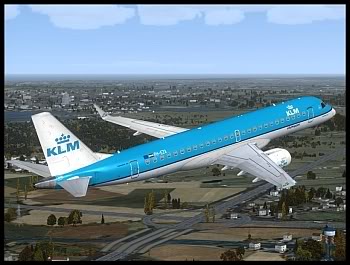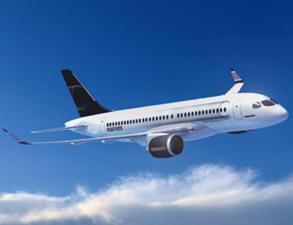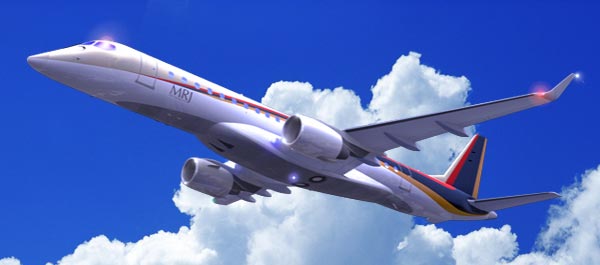At approximately 8:30 PM April 11th, 2011, CRJ 700 (MSN 10122) N641CA was exiting the active runway at John F. Kennedy International Airport in New York City. It was told to hold at taxiway Mike for clearance by controllers. An Air France A380, (MSN 49) F-HPJD, was given clearance to taxi behind the waiting CRJ to approach the active runway for take off.
It appears that the CRJ was not fully clear of the A380’s path and the left wingtip of the A380 impacted the tail of the CRJ spinning it almost 90 degrees to the left.
An evacuation order was given on the CRJ and passengers were taken off the aircraft. The A380 stopped on the taxiway after the collision and that flight was cancelled. Both aircraft were damaged from the incident, but are expected to be repaired and returned to operational status.
No injuries were reported on either aircraft.
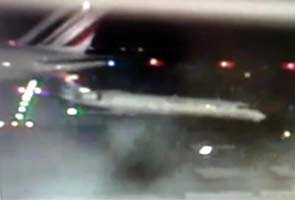
Post Collision Video Frame
The official NTSB report on the incident reads:
NTSB INVESTIGATING WING CLIPPING INCIDENT AT JFK AIRPORT
The National Transportation Safety Board is investigating a wing tip clipping that occurred between an Airbus A380 (F-HPJD) and a Bombardier CRJ-700 (N641CA) at John F. Kennedy Airport in New York last night.
On April 11, 2011 at 8:25 PM EDT, preliminary reports indicate that the left wing tip of Air France flight 7 struck the left horizontal stabilizer of Comair flight 293 while the Comair airplane was taxiing to its gate. There were 485 passengers and 25 crew onboard the Airbus and 52 passengers and 4 crew onboard the CRJ. No injuries were reported on either aircraft.
The NTSB has requested the fight recorders (cockpit voice recorder and flight data recorder) from both aircraft and will review the content of those devices as part of the investigation. Also, the NTSB will review the air traffic control tapes and ground movement radar data (ASDE-X). The damage sustained to both aircraft is still being assessed.
Parties to this investigation include the Federal Aviation Administration, Comair, and the Air Line Pilots Association. Also, accredited representatives from the French Bureau d’Enquetes et d’Analyses (BEA), the Transportation Safety Board of Canada (TSB), and their advisors from Airbus, Air France, and Bombardier Aerospace, are assisting the investigation.
The NTSB will release more information as it becomes available.
Post incident photographs from the NTSB show the following damage on each aircraft involved.
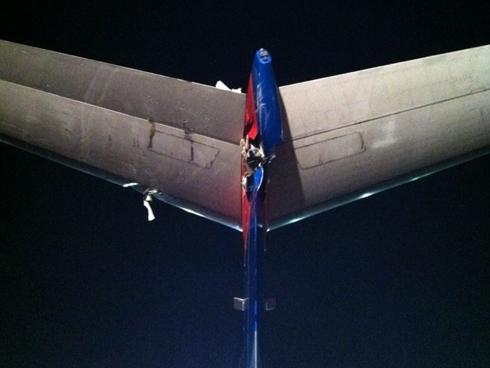
Tail damage to N641CA
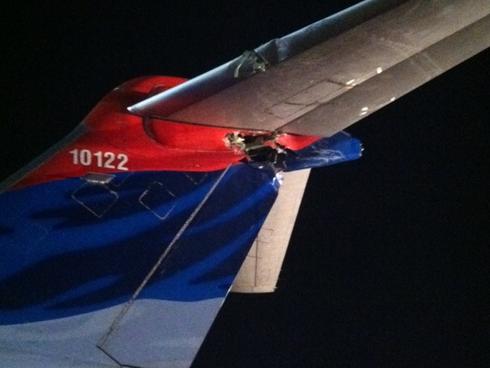
Tail damage to N641CA
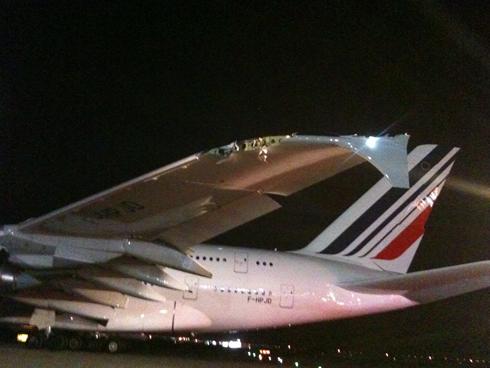
Wing Damage to F-HPJD
There is video of the collision from surveillance cameras at JFK which was shown on various news channels including CNN.
Link if video does not appear.
Alternative link for video.
The NTSB is continuing the investigation and further updates will be added to the site as they become available.

